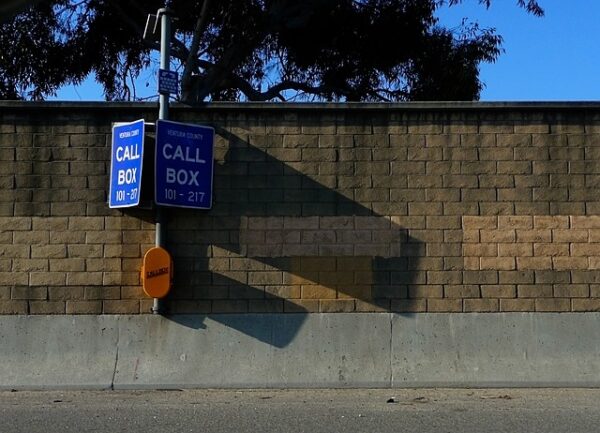SLO County plans on removing 75-percent of roadside call boxes
Call box use has declined by 90 percent in 20 years
–This week, the San Luis Obispo Council of Governments (SLOCOG) began removing call boxes along selected sections of U.S. Highway 101, State Route 46, and State Route 1 in the San Luis Obispo region, and will continue to do so through mid- February. This change was brought about by an analysis of current usage reflecting a significant decrease in call volume, as recommended by the SLOCOG Call Box Reduction Plan.
Since 1996, SLOCOG has served as the Service Authority for Freeway Emergencies (SAFE) for San Luis Obispo County and is responsible for the installation, operation, and administration of 161 highway emergency call boxes. Call box use in the region has drastically declined, by 90 percent over the last 20 years (peak use), and the cost to maintain the call box system has increased over time (i.e., largely due to cellular service upgrades).
Declining use coupled with the rapid advancement of cellular technology, increased personal cell phone ownership, and the cost to maintain the system led to the SLOCOG board’s decision to approve reducing the region’s call box system by 75 percent, from 161 call boxes to 41, last August. Some call boxes will remain because they receive a higher-than-average volume of calls, typically in extremely remote areas or areas where cellular reception is poor or nonexistent. This reduction will save the region approximately $500,000 over the next five years.
This removal effort is not new to California. Many SAFEs throughout the state have initiated call box reduction plans followed by systematic call box removals, including our neighbors in Santa Barbara County. “Technology is evolving,” said SLOCOG Transportation Planner Tim Gillham. “Based on a 2019 Pew Research Center survey, 96 percent of people now own cell phones and don’t rely on a roadside call box for emergencies like they once did. Having said that, safety is our number one priority and we have chosen to keep call boxes in key locations where topography makes signal strength less reliable or the call volume reflects a need.”























